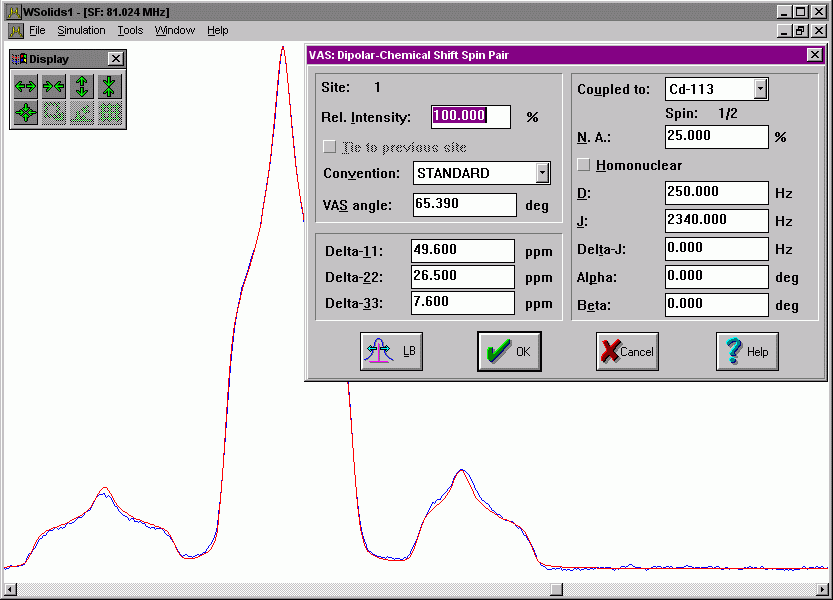[Uni Tübingen] - [Mat.-Nat. Fakultät] - [Fachbereich Chemie] - [Anorg. Chemie] - [Klaus Eichele] - [Software] - [WSolids1] - AX System

|
WSOLIDS1:
|
Description
This squeezed picture shows an example for the succesful simulation of a spectrum arising from the combined effect of chemical shift anisotropy, and heteronuclear indirect and dipolar coupling in a powder sample under fast variable-angle spinning. It is the 31P NMR spectrum of a cadmium phosphine complex.
Click on the picture to have a better look.
From version 1.21 and higher, this model also includes the calculation of spinning sidebands:
Click on the picture to have a better look.
Background
In addition to the chemical shift anisotropy (CSA), the spectrum of a spin pair will also depend on the direct dipolar coupling and potentially the indirect spin-spin coupling between both nuclei. Because both, the CSA and dipolar interaction, are tensorial interactions, the actual line shape also depends on their relative orientation. Spinning the powder sample rapidly about an axis that forms an angle different from the magic angle with respect to the external magnetic field, the resulting lineshape will look like that of a static powder sample, but scaled by a factor that depends on the spinning angle. This scaling factor ranges from 1.0 (for spinning parallel to the field) to -0.5 (for spinning perpendicular to the magnetic field).
Examples
The SVG images shown below were produced using the following tools: my own SpecPlot to plot the spectra, Platon or Ortep 3 for Windows to plot the molecular structures from X-ray data, and Inkscape to compose the picture.
[ Anorg. Chemie ] | [ Go Home ] | webm@ster | last modified: 20.03.2024



